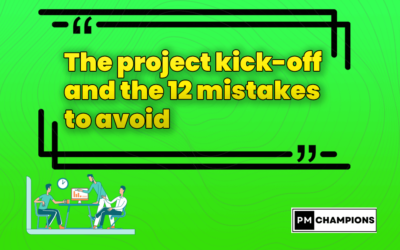What is an escalation in project management?

Agility:
Escalation is a bottom-up process, that rises in successive stages to more responsibility, capacity for action or expertise. The higher the level, the more complex and/or impactful the problem being addressed.
There are 2 main types of escalation, which work together and synchronously, so that internal mobilization is complete and coordinated:
- Hierarchical Escalation
- Functional Escalation

On a customer’s e-commerce site, a major payment incident has been detected that generates a crisis situation. This incident is a high risk as it may involve a financial loss that may be attributable to the service provider.
The Project Manager must react and escalate the topic internally quickly.
To do this, it will activate:
- -> his Manager, who will himself activate
- -> Service Liner Manager or Country Manager, which will activate
- -> General Directorate of Area, which will ultimately relay to the
- -> Group General Management.
Each will contribute to the chain of transmission of information within the company’s hierarchical structure, from the bottom up, to:
1. Bring the problem and its potential impacts to the attention of the organization’s stakeholders
2. Operationally involve the levels of the organization – immediately or in advance – in addressing the problem.
A customer’s e-commerce site, recently put into production by the service provider, worked well for the next two days. However, it then broke down, resulting in a significant loss of revenue for the client and exposing it to a lot of risk when it comes to engagement.
The Project Manager must react and escalate the topic internally quickly. It will therefore activate:
- -> the Project or Programme Director, who will activate
- -> the referring Delivery Manager, who in turn will activate
- -> the Delivery Head of the zone in question, which will activate
- -> the Group’s Head of Delivery Excellence.
The entire Delivery business chain will be aware of the problem and the risks, will be kept informed of progress in terms of resolution, and will intervene directly and operationally if necessary.
In the event of a major risk or problem involving the company’s responsibility, project managers are asked to immediately alert their N+1 supervisor as well as their referent Delivery Manager.
Mirror effect
Do
✔️ An escalation must be justified, and based on reliable and factual information.
✔️ A face-to-face exchange within the project team precedes the escalation, to collect and cross-check useful information.
✔️ An escalation must be intelligible and have the right granularity of information, to be immediately assimilated by the recipient(s).
✔️ You have to respect the escalation levels, address your hierarchical N+1 and your functional N+1.
✔️ Keep a cool head and take a step back to structure your thoughts.
✔️ Stem the escalation where possible, either by resolving the problem or eliminating the risk.
Don'ts
❌ Do not analyze before escalating a risk or issue.
❌ Do not have a direct exchange between the project manager and the team, and be content with relayed, subjective or only written remarks.
❌ Don’t drown the recipient(s) in details, macro-considerations or hypothetical digressions.
❌ Don’t alert all over the place, don’t bypass your N+1, don’t involve people who are not concerned, don’t generate counterproductive noise.
❌ Don’t react in the heat of the moment, confuse speed with haste.
❌ Don’t make the pass-through to the next level of escalating: the process is not an end in itself.


 This phenomenon can lead to an amplification of problems, often accompanied by various considerations such as the professionalism of the teams, the hypotheses of causal analysis, possible penalties or questioning of contractual commitments.
This phenomenon can lead to an amplification of problems, often accompanied by various considerations such as the professionalism of the teams, the hypotheses of causal analysis, possible penalties or questioning of contractual commitments. Depending on the level of escalation, the persons to be contacted as well as their titles and contact details will be specified.
Depending on the level of escalation, the persons to be contacted as well as their titles and contact details will be specified.




0 Comments